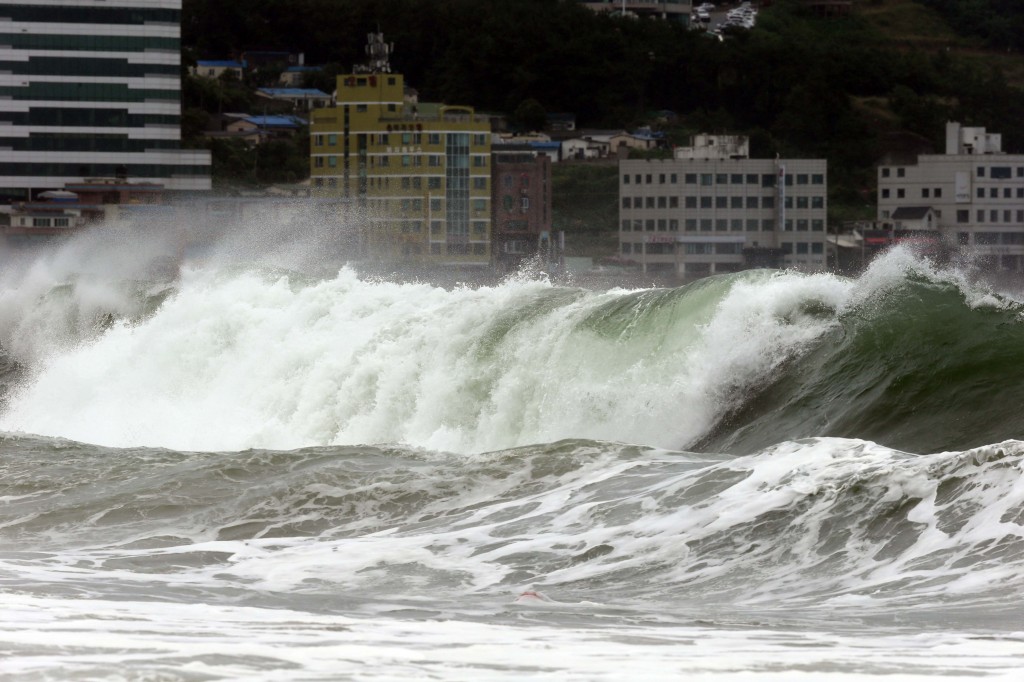- California Assembly OKs highest minimum wage in nation
- S. Korea unveils first graphic cigarette warnings
- US joins with South Korea, Japan in bid to deter North Korea
- LPGA golfer Chun In-gee finally back in action
- S. Korea won’t be top seed in final World Cup qualification round
- US men’s soccer misses 2nd straight Olympics
- US back on track in qualifying with 4-0 win over Guatemala
- High-intensity workout injuries spawn cottage industry
- CDC expands range of Zika mosquitoes into parts of Northeast
- Who knew? ‘The Walking Dead’ is helping families connect
Another storm moving toward Korean Peninsula
Typhoon Halong expected to hit Korea between Aug. 9th and 10th

Typhoon Nakri brought huge waves to Haeundae Beach in Busan last weekend. Weather forecast says another one is on its way. (Yonhap)
By Kim Se-jeong
Korea may have to brace for another strong storm this weekend after Nakri, which claimed 10 lives and caused significant property damage in the southern regions of the country, lost strength over the West Sea Sunday.
According to the Korea Meteorological Administration (KMA) Monday Typhoon Halong, which is currently over the waters off the Philippines, is moving northwest toward the Korean Peninsula. The typhoon, the strongest so far this year with a maximum wind speed of 53 meters per second, is forecast to bring heavy downpours and strong winds to Jeju Island Friday. The nation’s southern regions will experience its influence this weekend.
“Starting from Aug. 8th in Jeju Island, the rainfall will arrive in the southern provinces and Gangwon Province between Aug. 9th and 10th,” a KMA official said.
Korea’s southern regions suffered from Typhoon Nakri, which faded on Sunday afternoon near Gunsan, North Jeolla Province.
As of 9 a.m. Monday, Typhoon Halong was passing the Philippines, moving northwest at 14 kilometers per hour, according to the KMA. By Thursday morning, the typhoon will be 190 kilometers south of Okinawa, the southern island of Japan.
The KMA warned residents in the affected region to stay on alert.
Other parts of the country are expected to stay dry with some scattered showers.
Nakri caused record-high rainfall and killed 10 people.
A mountain top in Jeju Island had more than 1,000 millimeters of rainfall over the weekend, one of the highest amounts in history. Mount Jiri was also bombarded with more than 500 millimeters of rain.
In Cheongdo, North Gyeongsang Province, a vehicle carrying a family of seven was swept away by a swollen stream, killing all. In Youngdeok, North Gyeongsang Province, a tree fell on a tent, killing a 7-year-old boy sleeping inside. In Wando, South Jeolla Province, a fisherman was killed by a door that fell on him from a building. On Jeju Island, a man was injured after a window shattered onto him.















